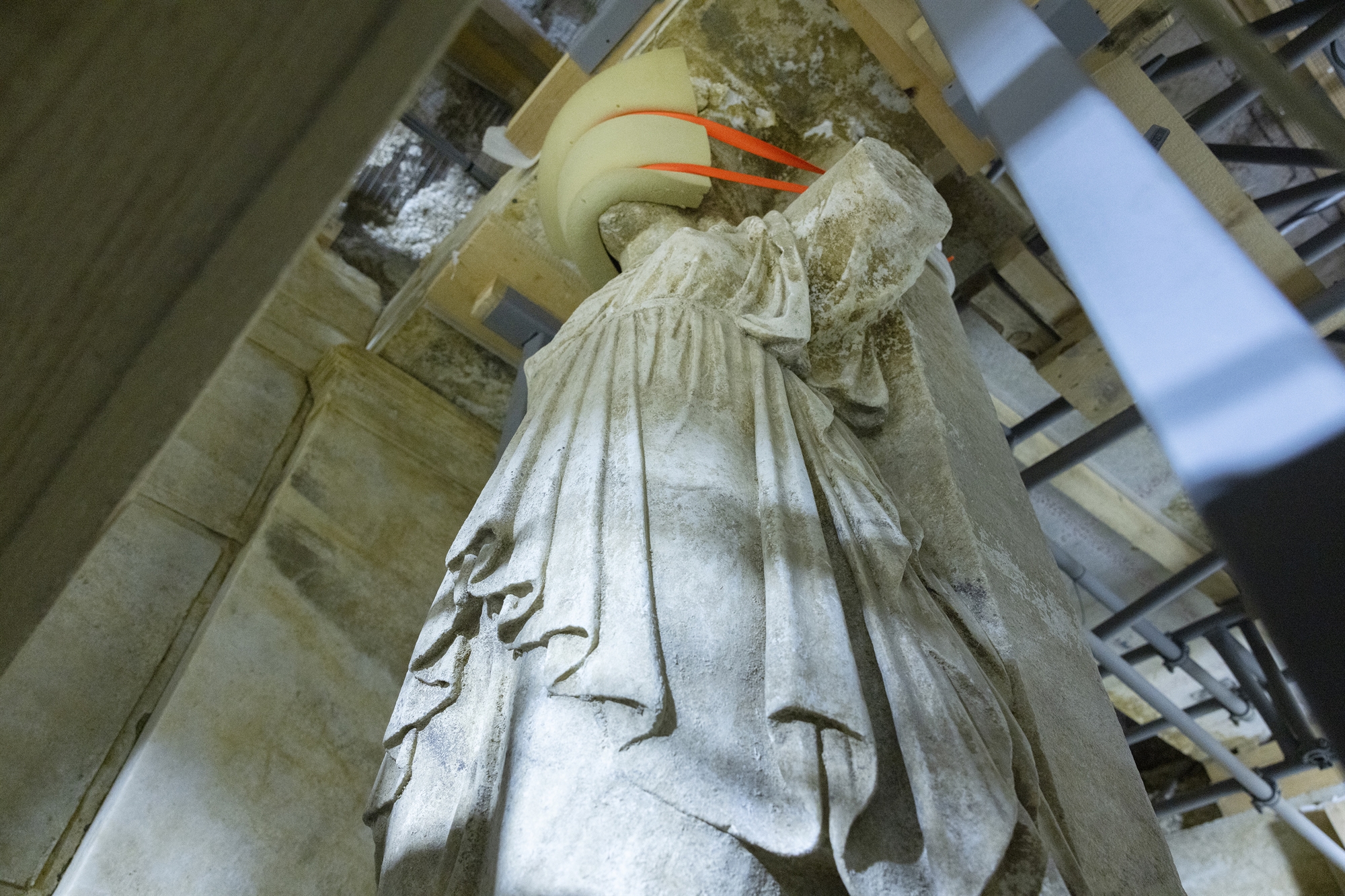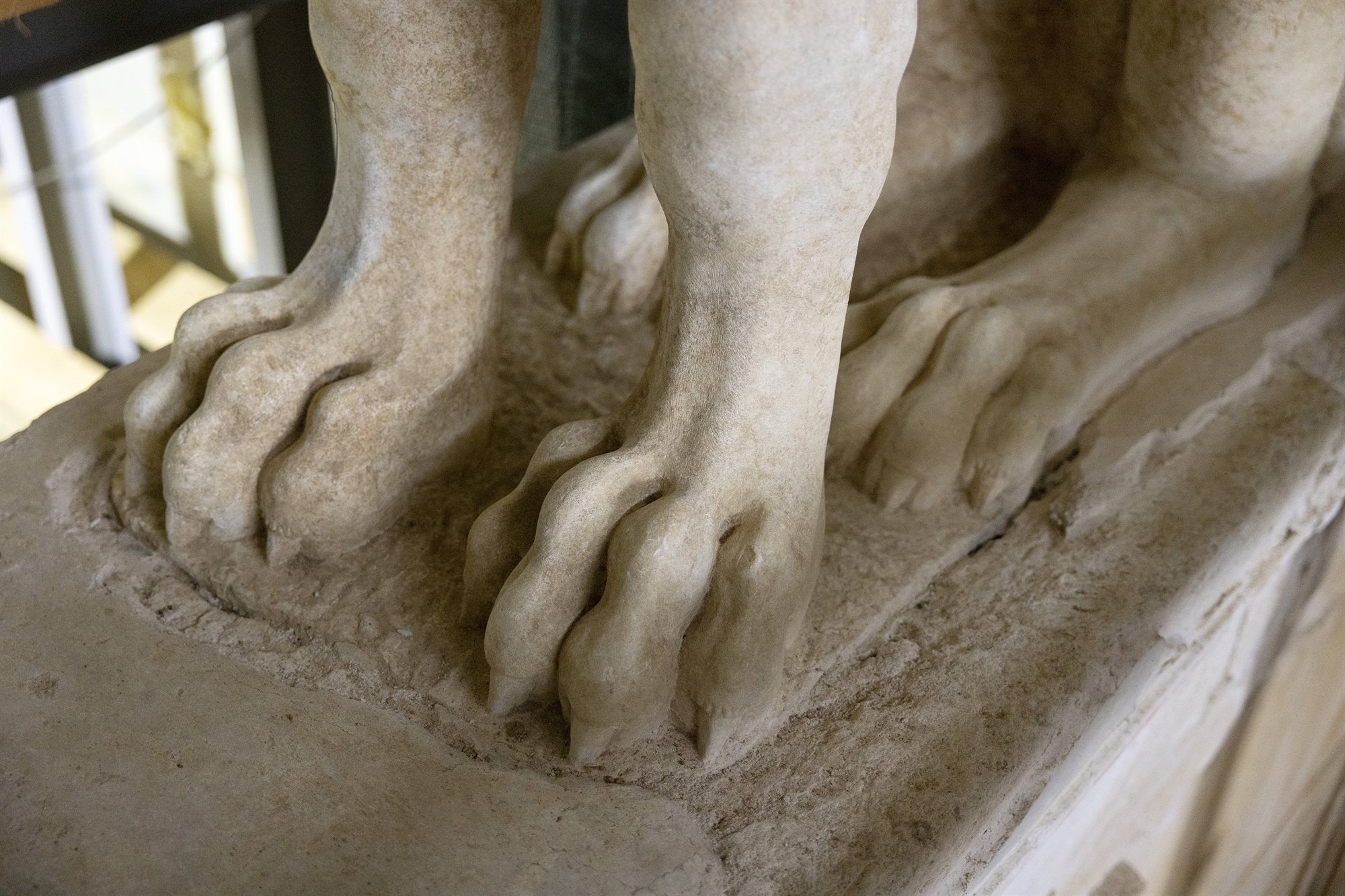
Leaving behind the river Strimonas, the road to Caste Kurgan goes through Nea Mesolacchia, a small village, only 200 inhabitants. Small signs with red arrows point to a dirt road, at the end of which is the famous tombstone of Amphipolis. At the entrance, the head of the Ephorate of Antiquities of Serres awaits us. Demetrius Malamidou. Passing under the now famous sphinxes that adorn the entrance gate of the burial monument, we go down the stairs and see a long corridor leading to the burial chamber. To the right and left of the corridor are two caryatids, impressively preserved after so many centuries, and part of the floor is covered with mosaics.
Nine years after its excavations, countless publications and discussions, the Kasta mound opens its gates for the first time to a number of special and small groups of the public. The monument dates from the end of the 4th and the beginning of the 3rd century BC. “Its feature is its large size, the sculptural decor inside, the use of marble for cladding surfaces inside, and the round wall that surrounds the Casta Hill,” Ms. Malamidou tells us. The burial chamber at the end of the corridor has the most damage, which is very quickly visible from the wounds in the marble. As the archaeologist explains, these burrows have been dug since ancient times and were used by gravediggers. Standing next to Ms. Malamidou is Mr. Nikos Furlios, one of the mound keepers. He smiles, seeing how we are silent for the first few minutes and look at the decoration and the impressive size of the monument. “It is a pleasure for us to see the awe that you experience when you see the monument for the first time. We feel this thrill every day,” he notes, adding that even now he notices something different every time. “In the beginning, every day we found something that made us exclaim,” the warden adds. George Gallios.

These features admired by the curators and the innovations introduced in the monument, such as the sculptural decoration, bring the conversation back to the personality of the mound’s occupant. “The indication is not direct, from epigraphic evidence, but the dimensions and characteristics of the tomb indicate an important person, or rather an important family of Amphipolis of Hellenistic times, who would have had the means to erect such a monument,” he notes. Ms. Malamidou, pointing out that at that time the soldiers of Alexander the Great were returning to Amphipolis, bringing with them great wealth from the campaigns in which they participated, and wanted to brag about it. She herself does not exclude that the monument belongs to the companion of Alexander the Great.
Alexander the Great
According to the official schedule, the monument will be open to the public in 2027.
Such an answer will certainly not satisfy the locals, who still hope that something much more important is hiding behind this monument, for example, a relative of Alexander the Great or even the soldier himself. “This is Roxani and Olympiad,” the guard says. Nikos Papaioannidis shows us two dogs that have been adopted by a team of guardians. “The whole world is waiting for something different, something more,” he says, recalling that in the beginning, when the monument was being dug and he was working here, he could not even appear in the village cafe because he was bombarded with questions. . “We are always wondering if there is something else,” adds Nikos Furlios. “This is the usual mass hysteria of Alexander the Great. It is entirely justified that public opinion is seduced by such beautiful and attractive ideas,” comments Ms. Malamidou.
However, the glory of the monument was not limited to Greece. The guards say they have taken on the thankless role of chasing away visitors as soon as they arrive. “We have to kick them out,” they say, adding that they meet, especially in summer, tourists from all over the world, such as Australia, China and Japan. In the next period, representatives of local governments, professionals involved in tourism in the regional department of Serres, scientists and educators of all levels will be able to visit the monument. Interest is already high and the tour closing phones keep ringing and the first week is almost full of bands. However, according to the official schedule, the monument will be opened to the public in 2027.

Ms. Malamidou states that the process of restoring and maintaining the monument so that it can stand out is agonizing and slow and fraught with many problems, as it requires attention and coordination both for the safety of the monument and for the public that visits it.
The local community, which witnessed an explosion of public interest in 2014 believing the monument would change the area forever, was disappointed by the delay. “Then even the value of the fields increased. There was a blow, and he was blown away. We even learned about today’s visit from the media,” says Vassilis Bakalis, owner of a snack bar in the area, bitterly. However, the head of the Ephorate of Antiquities emphasizes that the monuments are not a tourist product and require our respect in order to pass them on to society and future generations for their due way.
Source: Kathimerini
Ashley Bailey is a talented author and journalist known for her writing on trending topics. Currently working at 247 news reel, she brings readers fresh perspectives on current issues. With her well-researched and thought-provoking articles, she captures the zeitgeist and stays ahead of the latest trends. Ashley’s writing is a must-read for anyone interested in staying up-to-date with the latest developments.